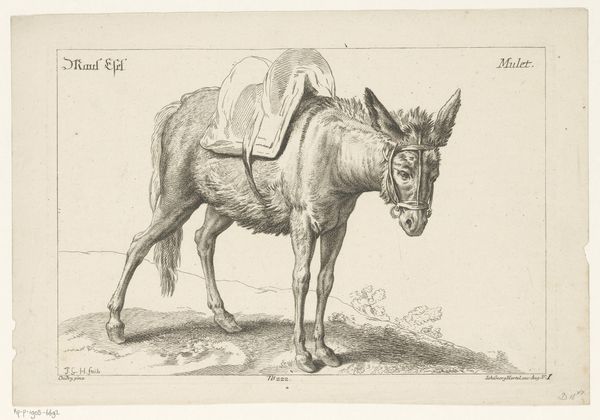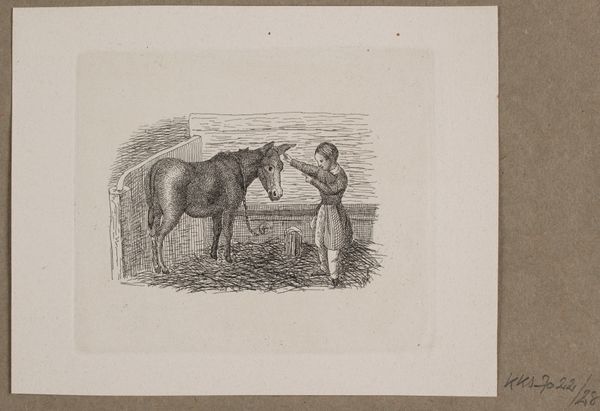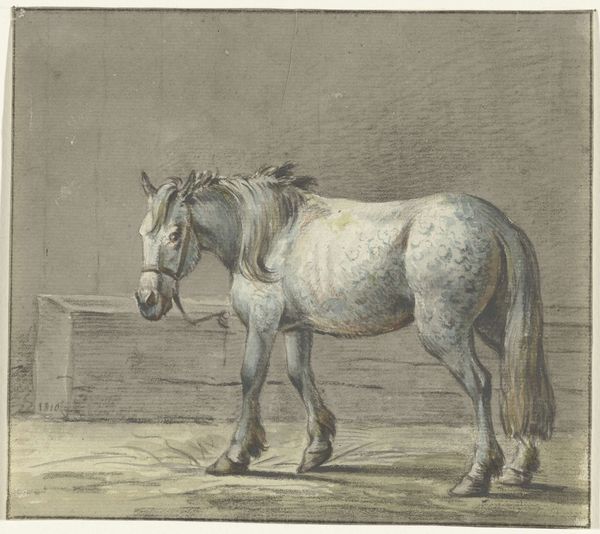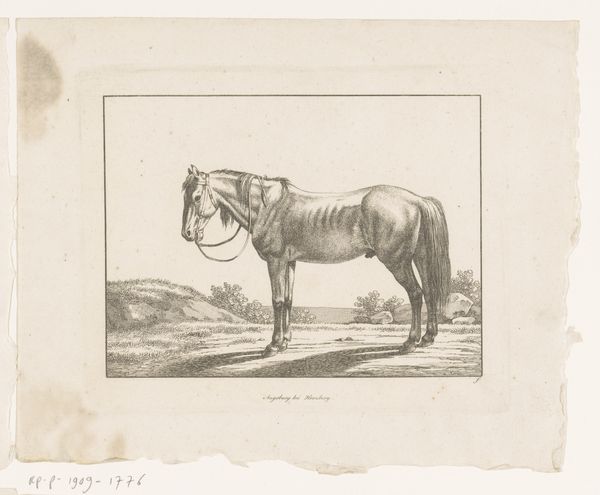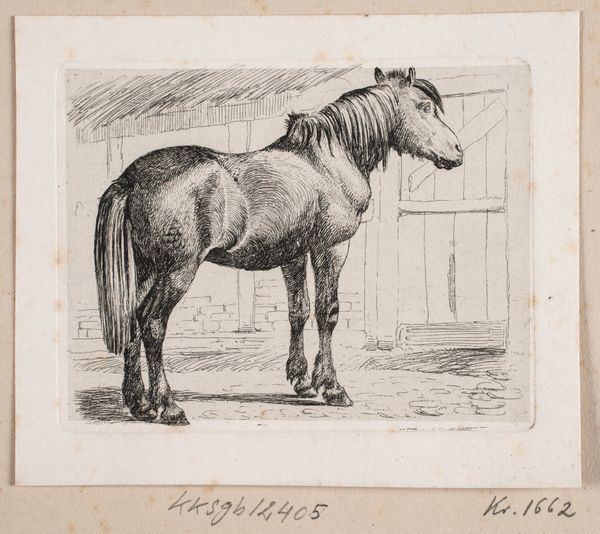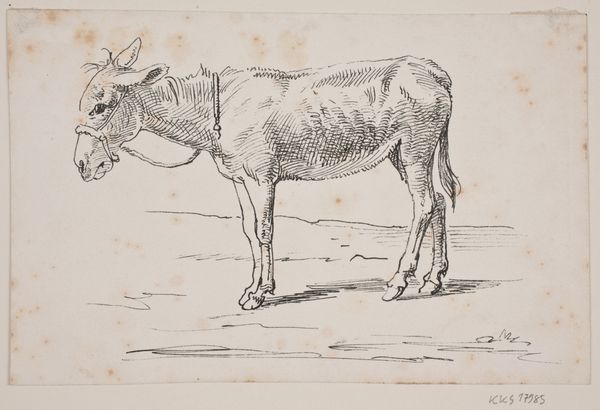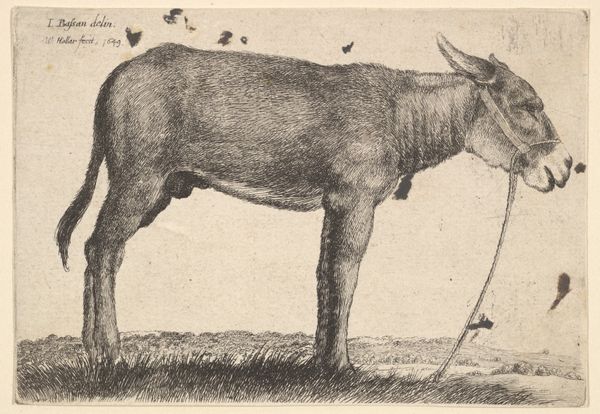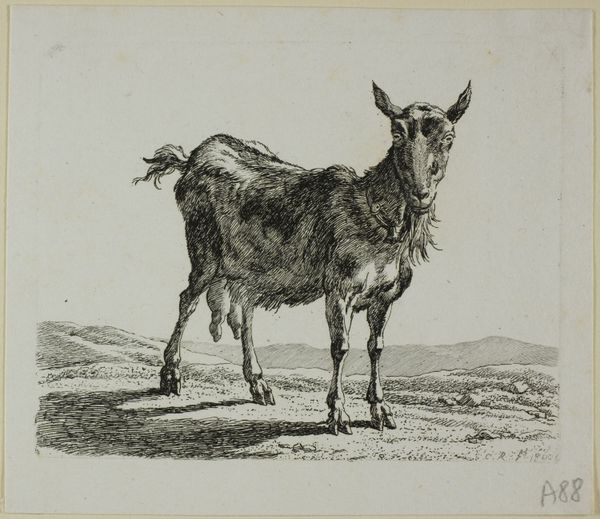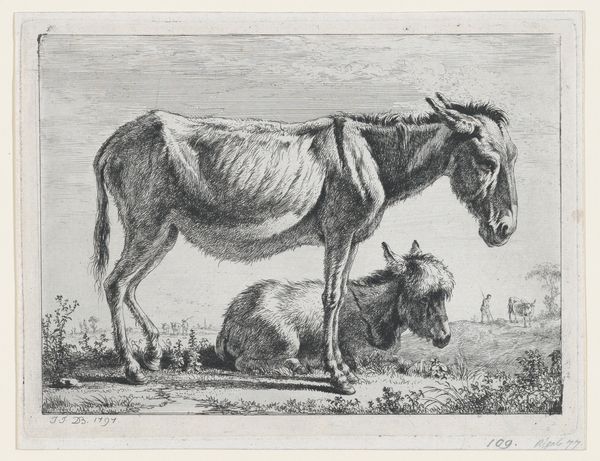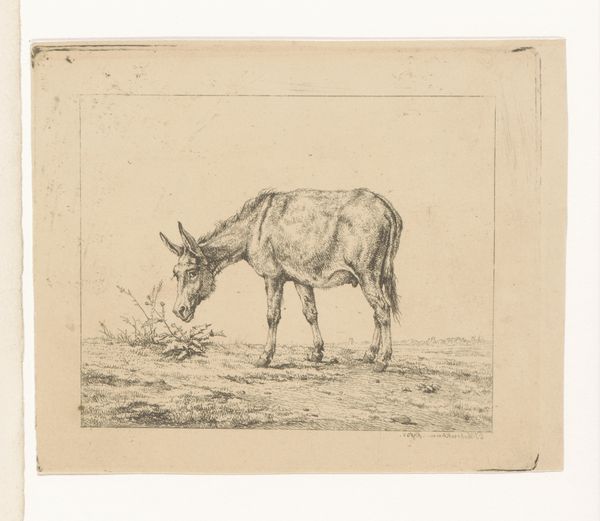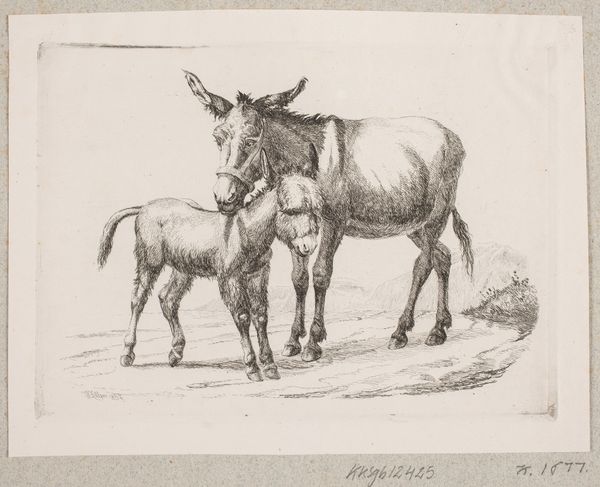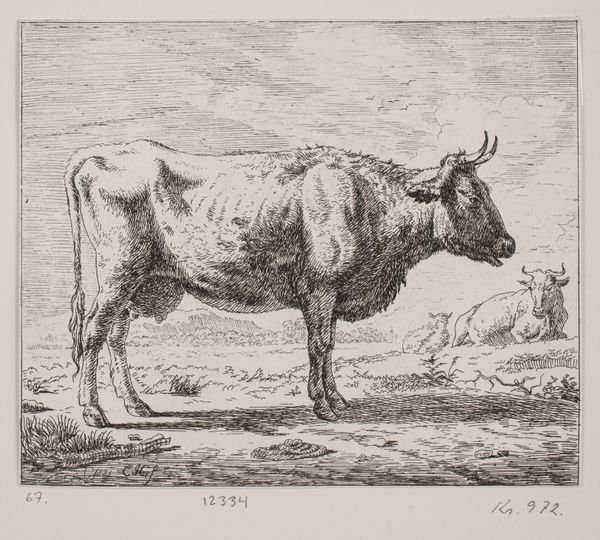
drawing, print, woodcut
drawing
narrative-art
animal
figuration
woodcut
line
Dimensions: 83 mm (height) x 91 mm (width) (bladmaal)
Curator: Ah, another visit with Andreas Flinch's "Æsel," or "Donkey," dating from 1840 to 1843. This work, a woodcut drawing on paper, offers such simple beauty, wouldn't you agree? Editor: Immediately, I see a portrait of animal labour—the literal burden and structural violence that this beast bears. His drooped head suggests anything from a life of enslavement to the sheer indignity of it all. Curator: Enslavement seems a strong term. To me, he looks…melancholy. A quiet soul simply contemplating the texture of his stable door. Flinch's style, that wonderful linear detail! Each line seems so deliberate, a love letter to the everyday. Editor: And who decided this donkey’s everyday should look like this? We need to remember that animals and vulnerable populations share complex intersections of class and forced servitude. This image forces a reckoning: Who benefits when someone else carries the load? Curator: Hmm, I see your point. But consider the composition. Flinch positions him centrally, almost reverentially. He isn’t shying away; he seems to offer us…acceptance? Perhaps Flinch himself felt burdened, and saw a kindred spirit? The lines certainly feel empathetic, not critical. Editor: Empathetic to whose struggle? Is it possible that Flinch also reflects an indifference to issues of fair representation? Perhaps we ought to deconstruct his gaze and re-evaluate from the margins. What happens if we invert the narrative? Curator: Invert? You mean like, imagine the donkey as some philosophical sage observing us humans and our follies? I love it! A critical beast indeed, pondering existence through those droopy, wise eyes. Editor: Precisely! It urges us to contemplate all beings caught in a societal trap—to foster liberation beyond just our species. Curator: You always steer me to such fascinating depths. I initially thought, 'Oh, a simple, charming donkey sketch.' Now I see him entirely differently – burdened, yes, but also quietly defiant. Editor: It’s never "just" a donkey, is it? I, for one, find him an important commentary on subjugation and resilience. He is a powerful representation of our own societal burdens and possibilities.
Comments
No comments
Be the first to comment and join the conversation on the ultimate creative platform.
